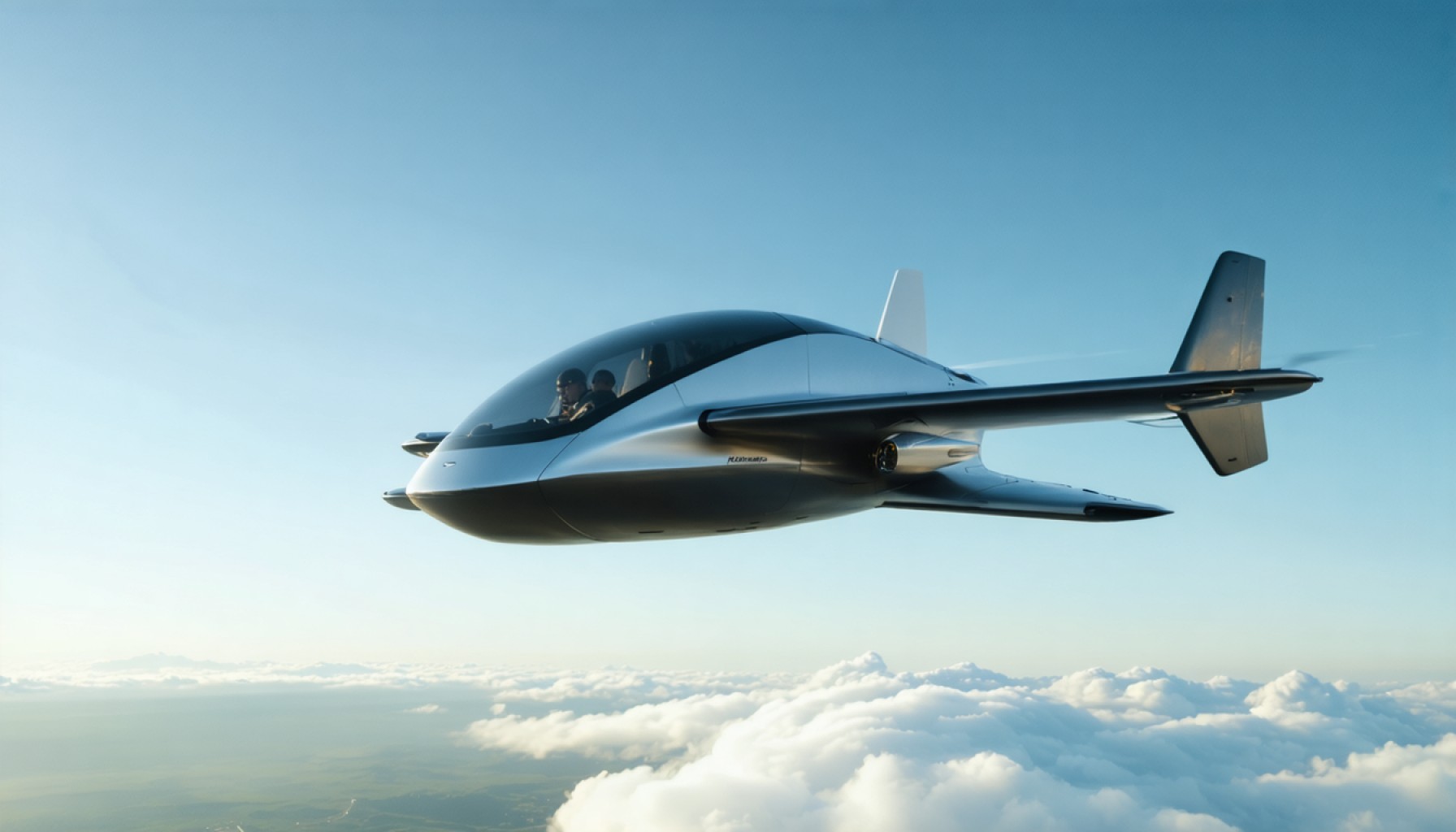- Xpeng Motors is investing 3 billion yuan ($413 million) in its eVTOL aircraft division, aiming to revolutionize urban mobility.
- The company is building the world’s first mass-production factory for flying cars, with a target to produce 10,000 units annually.
- Xpeng’s vision aligns with estimates that the global eVTOL market could reach $2 trillion within two decades, nearly 20% of the automotive market.
- Xpeng Aeroht, a subsidiary, is advancing efforts, applying for an airworthiness certificate for the innovative Land Aircraft Carrier.
- The move signifies a shift in transportation, emphasizing aerial over road mobility as part of the future landscape.
A daring vision takes flight over the cityscape of Guangzhou as Xpeng Motors sets its sights on the skies, embarking on a groundbreaking journey that might just redefine urban mobility. Committing a bold investment of 3 billion yuan ($413 million) this year to its electric vertical takeoff and landing (eVTOL) aircraft division, Xpeng aims to transform sci-fi fantasies into a tangible reality.
At the heart of this ambitious venture lies the world’s first mass-production factory for flying cars. Once operational, it promises to churn out 10,000 units annually, marking a seismic shift not only for China but for the global mobility market. This facility will not just manufacture vehicles; it will manufacture dreams.
Xpeng’s determination is rooted in a powerful forecast: a belief that the global eVTOL sector could soar to a staggering $2 trillion within just two decades. Such growth would represent one-fifth of the global automotive market’s revenue. For those weary of earthbound traffic, the skies offer an open invitation.
Within Xpeng’s innovative corridors, Xpeng Aeroht, its dynamic subsidiary, is already trailblazing. They have submitted an application for an airworthiness certificate to the Civil Aviation Administration of China for their promising endeavor, the Land Aircraft Carrier. Though its flight range currently extends to just under 30 kilometers (19 miles), the symbolic first steps have been accomplished.
As Xpeng stakes its future in these airborne adventures, it invites a larger reflection on the trajectory of human transportation. The takeaway from this daring endeavor is clear: Our future will not merely be defined by what moves on roads but by what soars above them. As industries converge to meet the challenges and securities of flight, Xpeng stands poised at the edge of innovation, inviting the world to rise to the occasion with them.
The Future of Urban Transportation: Exploring Xpeng’s Ambitious Leap into the Skies
Xpeng’s Vision for the Future
Xpeng Motors’ bold investment of $413 million in its eVTOL (electric vertical takeoff and landing) division could redefine urban mobility. Their objective is clear: transform sci-fi dreams into everyday realities with flying cars. This massive investment will catapult Xpeng as a leader in an industry with an anticipated market value of $2 trillion over the next 20 years.
Key Features and Specifications of Xpeng’s eVTOL
– Annual Production Goal: 10,000 units, showcasing the scale of their ambition.
– Flight Range: Initially limited to under 30 kilometers (approximately 19 miles), it’s sufficient for short urban commutes.
– Development Progress: Xpeng Aeroht has already applied for an airworthiness certificate from the Civil Aviation Administration of China.
Pressing Questions and Answers
What Are the Challenges and Limitations of Flying Cars?
1. Regulatory Hurdles: Securing flight approvals is complex and involves navigating tight regulatory frameworks.
2. Safety Standards: Ensuring the safety of passengers and the public is critical.
3. Infrastructure Development: Flying cars will necessitate infrastructure such as skyports and landing facilities.
How Can Consumers Benefit from the Transition to eVTOL?
– Reduced Commute Time: Bypass congested roads for quicker transit.
– Enhanced Mobility Solutions for Cities: Alleviate urban congestion and expand reach to previously inaccessible areas.
Market Forecast and Industry Trends
– Growth Trajectory: The global eVTOL market is projected to be a $2 trillion industry, capturing a significant share of the automotive market revenues.
– Technological Advancements: Innovations in battery technology and autonomous systems will drive industry growth.
Real-World Use Cases
– Urban Commutes: Short-distance flights can effectively reduce travel times within cities.
– Inter-City Trips: Potential for quick trips between nearby cities, bypassing conventional traffic.
Comparison: Xpeng vs. Other Competitors
Xpeng faces competition from notable players such as Joby Aviation and Lilium. While Xpeng’s focus is on mass production, its competitors explore different approaches like speed and range enhancements.
Security and Sustainability
– Emission Reduction: eVTOLs, powered by electricity, promise a more sustainable alternative to fossil-fuel-dependent vehicles.
– Cybersecurity Measures: Protecting the digital interfaces and autonomous systems from cyber threats is crucial.
Insights and Predictions
– Public Adoption Curve: Initial adoption may be slow due to high costs and public acceptance hurdles, but as prices fall, popularity is likely to rise.
– Future Urban Planning: Cities may need to adapt urban planning to integrate eVTOL services effectively.
Actionable Recommendations
– Stay Informed: Follow developments in eVTOL technology to explore future investment opportunities.
– Advocate for Policy Development: Engage with policymakers on supporting infrastructure and regulations for flying vehicles.
For more insights into innovative technology trends and developments, visit XPeng Motors.
